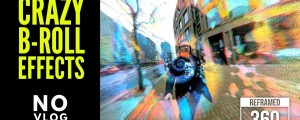

- #Ae pixel sorter team v.r mp4#
- #Ae pixel sorter team v.r update#
- #Ae pixel sorter team v.r android#
- #Ae pixel sorter team v.r free#
The downside of this resolution is that there is a limit at 30 frames per second. The funny thing is that when you display this stretched/compressed video on the inside of a sphere for playback in a VR headset, everything is pushed back to the correct proportions again! And by using a resolution of 3840×2160 instead of 2048×2048 (what we initially used), Chris Milk has a whopping 97% more pixels to display! A massive improvement!Īmazingly, he even uses this UHD resolution for the VRSE Cardboard app, something which we thought would not be playable! However, my 2 year old Nexus 5 phone is more than able to smoothly play these 4k videos, resulting in an amazing experience, even when using a low-end cardboard viewer. The following diagram might make things more clear: So in other words, these videos have more pixel density on the horizontal axis than on the vertical axis, and so everything in the scene looks short and fat. This means that the video resolution is compressed in the vertical direction. This resolution has a 16:9 aspect ratio, not the 1:1 aspect ratio you usually start with when shooting stereoscopic VR content. The resolution of 3840×2160 is the official Ultra HD (UHD) standard for 4k videos, also referred to as 2160p.
#Ae pixel sorter team v.r android#
So pretty appalling for VR video playback), while most Android phones will play level 4.2 videos just fine. For example, iPhones only support videos up to level 3.1 (1920× is the absolute max for iPhone 5. Each device supports videos up to a certain h.264 level. The level describes the max resolution and bitrate acceptable.

This makes it the go to profile for mobile VR, like Google Cardboard and Gear VR. Google also recommends the Baseline profile for h.264 video playback on Android. The Baseline profile is primarily used for decoders with limited computing power, like mobile applications. We encountered these settings often in our encoding tools, but usually didn’t pay a whole lot of attention to them.
However, the key is in the profile and level he uses.
#Ae pixel sorter team v.r mp4#

One of the biggest VR filmmakers of this moment is Chris Milk from VRSE. Therefore we decided to analyze what some of the legendary VR video producers were doing to solve this problem… Studying Chris Milk We started to scour the dark corners of the internet to find out who had the magic answer, but there were many conflicting opinions. We also told them how you lose a lot of resolution since you spread the pixels out over the surface of a sphere, and then on top of that look at it through two big lenses which magnify each pixel of your phone screen (in case of Gear VR).Īll reasonably valid points, but still we felt we needed to do something about this. We told them that our camera filmed in a much higher resolution, but that we’re only able to display 25% of the pixels that we shot due to hardware limitations of the display devices. We knew that the playback resolution wasn’t great, and some viewers, even though they loved the VR experience, commented on this fact as well. Not a single VR headset is currently able to play this back smoothly, so we scaled the resolution down until we had smooth playback, which was around 2048× Avi, has an exotic 1:1 aspect ratio and a resolution of 4096×4096 pixels at 60 frames per second. We at Purple Pill VR film in stereoscopic 3D on all sides, which ultimately results in one video file containing 2 panoramas, one for your left eye and one for your right eye, stacked on top of each other.
#Ae pixel sorter team v.r free#
This article explains the settings we started with, what we learned from analyzing some of the legends in the field (like Chris Milk and Felix & Paul), and finally we’ll share a simple yet powerful free tool we built to help you encode your VR video content with the best possible settings. Each platform supports different resolutions, frame rates, codecs, and bitrates. One of the most time consuming and frustrating tasks we encountered during our first 360 3D video productions was finding the optimal encoding settings for each of the currently available VR headsets.
#Ae pixel sorter team v.r update#
Update Please check our latest blog for the latest developments in 360 video encoding


 0 kommentar(er)
0 kommentar(er)
